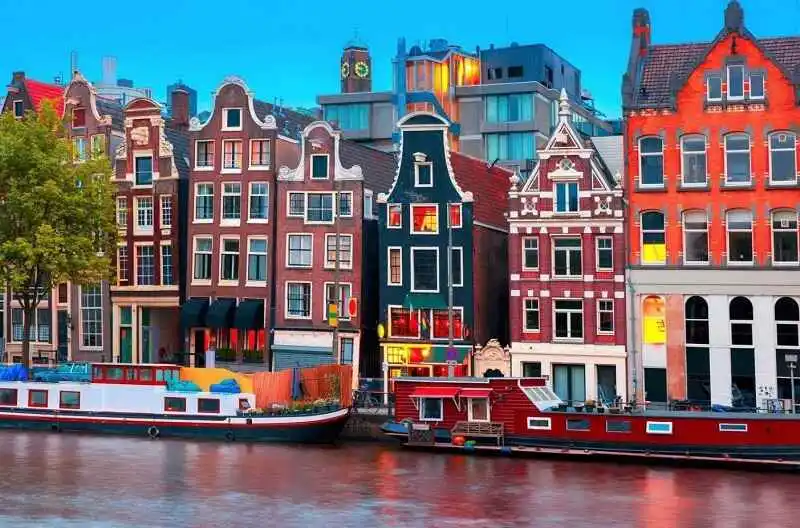When people think of the Netherlands, tulips, canals, and bikes likely come to mind. But what truly powers this compact yet influential nation? The languages of the Netherlands – and the stories they tell.
Every language spoken here tells a deeper story. Of colonial history. Of migration. Of pride. Of connection.
At TransLinguist, we’ve partnered with nonprofits, governments, and global companies working in the Netherlands. And what we’ve learned?
Here are six key language groups shaping life, business, and culture in the Netherlands.
Dutch: The Heartbeat of the Nation
It’s the official language. The one on every road sign, government form, and classroom whiteboard. The one you hear in schools, courtrooms, and daily life.
Dutch Nederlands isn’t just a language. It’s a cultural thread, running through every province and policy.
Quick facts:
- Spoken by over 17 million people in the Netherlands
- Part of the West Germanic language family
- Shares linguistic roots with English and German
- Evolved from Old Frankish in the early Middle Ages
If you’re running a business, publishing public content, or working with institutions, accurate and culturally fluent Dutch matters — a lot.
At TransLinguist, we make sure your Dutch isn’t just correct. It connects.
Frisian: A Language That Refuses to Fade
Step into Friesland in the north, and you’ll hear Frysk — Frisian. Not a dialect. Not a “cute local version” of Dutch. It’s a full language. And a declaration of heritage, identity, and pride.
Why Frisian matters:
- Co-official in Friesland since 1956
- Linguistically closer to English than to Dutch — seriously, try comparing “house” in Frisian (hûs) and English
- Used in local education, media, and even municipal government
- Central to regional pride — and preservation efforts that’ve lasted decades
Want to do meaningful work in Friesland? Even acknowledging Frisian shows deep cultural respect.
We offer Frisian translation and localization that keeps authenticity intact — because tone, history, and nuance aren’t footnotes. They’re the point.
Papiamento: Caribbean Roots, Dutch Ties
The Kingdom of the Netherlands stretches far beyond Europe — into the Caribbean, where islands like Aruba, Bonaire, and Curaçao speak Papiamento.
Key highlights:
- Spoken widely in Dutch Caribbean territories
- Used in daily life, education, and government
- Not common on the mainland — but absolutely vital for Kingdom-wide communication
- And honestly? It’s one of the most expressive languages I’ve ever used. Melodic. Rhythmic. A lot of soul.
If you work for a nonprofit in Curaçao or a government agency that coordinates activities across the islands, it’s not just nice to know Papiamento; it’s necessary.
At TransLinguist, we deliver culturally grounded Papiamento translations that feel like home — because trust starts with recognition.
Immigrant Languages: The Sound of a Changing Nation
The Netherlands is, and always has been, a country of migration.
These aren’t “minority” languages. They’re foundational. They fuel neighborhoods, businesses, schools, places of worship.
Most spoken immigrant languages:
- Turkish
- Arabic (including dialects like Levantine and Iraqi)
- Berber (Tamazight)
- Surinamese languages — Sranan Tongo, Javanese, Hindustani
- Indonesian
- Polish
- Chinese — mainly Mandarin and Cantonese
And here’s the thing: inclusive messaging isn’t just nice to have. It’s expected. In public health campaigns. In city services. In education.
Need a flyer in Arabic? A school guide in Polish? We’ve got you covered — with real cultural fluency, not just machine translations.
Because translation without context? It’s noise.
English: Everyone Speaks It—But That’s Not Always Enough
Yes, the Dutch are some of the best non-native English speakers in the world.
Seriously — they’re consistently in the top three globally.
But fluency doesn’t equal emotional resonance.
Why English still matters:
- Introduced early in primary school — most kids start by age 8
- Dominant in higher education, tech, and international business
- Essential for tourism, research, and global collaboration
Still — Dutch audiences often respond more deeply to content in Dutch. Or in another language they identify with.
I’ve seen global brands assume English is enough. And then wonder why engagement is low.
Regional Dialects: Where History Still Whispers
Beyond the major languages, the Netherlands is dotted with regional dialects — each with its own rhythm, vocabulary, and sense of place.
They’re not just “accents.” They’re microcultures.
Notable dialects:
- Limburgish — melodic, almost sing-song, spoken in the southeast
- Low Saxon (Nedersaksisch) — used in the northeast; earthy, bold, with Germanic roots
- Zeelandic — spoken in Zeeland; rare, but preserved by local pride and cultural groups
Now, these aren’t officially recognized as separate languages — but try telling that to someone in Maastricht.
When messaging is hyper-local — think city campaigns, community outreach, regional marketing — dialect awareness isn’t just nice. It’s smart strategy.
We pay attention to these nuances. Because language isn’t just what you say. It’s how you make people feel.
Final Notes: Language Isn’t Just What We Speak—It’s Who We Are
There are various voices in the Netherlands. There are many languages spoken in the country, from Dutch to Papiamento, Frisian to Arabic. Each one lends colour and meaning to the story.
Language access is cultural access, so keep this in mind if your company wants to do business, grow, or serve in the Netherlands. And real access builds trust, loyalty, and community.
At TransLinguist, we specialize in:
- Certified Dutch translations
- Frisian and dialect localization
- Papiamento and migration-language support
- Website and digital content translation
- AI-powered subtitles and real-time interpretation
Whether you’re a global company or a local nonprofit, we help you reach every voice in your audience.
Ready to speak to every part of the Netherlands?
Contact TransLinguist today for a free consultation on multilingual strategies that reach beyond borders and connect across cultures.
What language do people in the Netherlands speak?
The official language of the country is Dutch. Frisian is one of the official languages in Friesland.
Do a lot of people in the Netherlands speak English?
Yes. The Netherlands is one of the best countries in the world for those who don't speak English as their first language. But using Dutch still matters in many settings.
What immigrant languages are most common?
Turkish, Arabic, Berber, Indonesian, Surinamese languages, Polish, and Chinese are among the most spoken.
What is Papiamento and where is it used?
Papiamento is a creole language spoken in Dutch Caribbean islands like Aruba, Bonaire, and Curaçao. It’s not used in mainland Netherlands but is essential for cross-Kingdom communication.
Why consider dialects when creating Dutch content?
Dialects carry deep regional identity. For highly localized messaging, recognizing and reflecting these dialects can increase engagement and trust.



